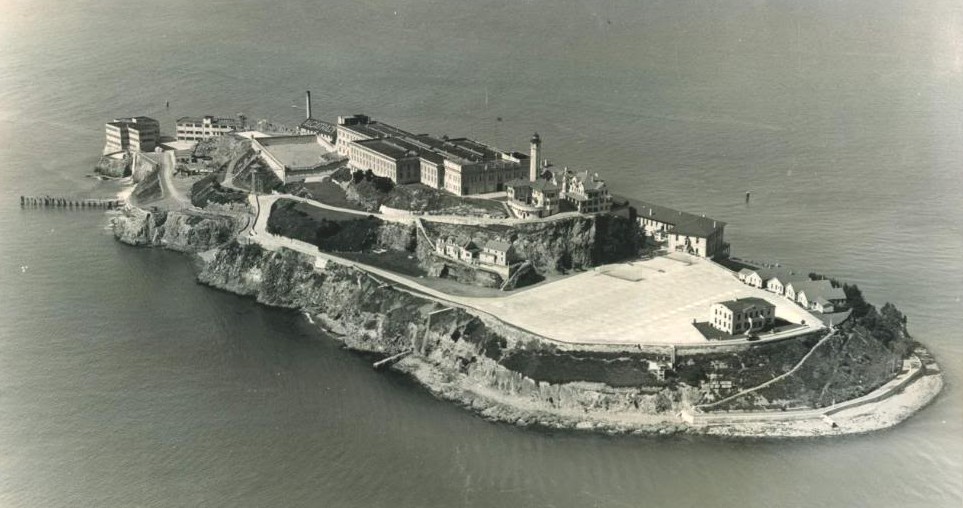![]()
![]()
 |
|
Alcatraz Island, 1936 (Acme Photos)
|
| Has anyone ever escaped
from Alcatraz? Yes!
Anyone who has seen Clint Eastwood's 1977 movie, Escape from Alcatraz, know that at least three men disappeared from the prison in 1962. Whether they lived to tell the tale is a mystery. But, it wasn't the first nor the last escape attempt from The Rock. The myth that Alcatraz was "escape-proof" was wrong. Military and Federal prisoners have attempted escapes by using forged papers, hiding in concealed boxes, using rafts, and by swimming. Although the majority of them were recaptured, some military prisoners were successful and some federal prisoners may have beaten the system. MILITARY PRISON Alcatraz Island was seized by the United States in 1846. Work began on fortifications in 1853 and in 1857 a citadel was constructed. In 1861, the fort was designated as the official U.S. Army prison for the western states and territories. Between 1908 and 1911, the citadel was demolished and replaced by the present reinforced concrete cellhouse. The most successful escape was on 28 November 1918. Four prisoners had managed to escape with rafts. The authorities assumed they had drowned in San Francisco Bay, but they later appeared in Sutro Forest. One of them was recaptured. As a Military Prison, documented are at least eighty (80) men had attempted to escape in twenty-nine (29) separate attempts; of those, sixty-two (62) were caught, one (1) may have drowned, and seventeen (17) were unknown.
|
FEDERAL PENITENTIARY
In 1934 Alcatraz was converted into a Federal prison. The old military prison was upgraded and installed with the lastest "escape-proof" safeguards. It was assumed that the "treacherous waters" of the San Francisco bay would be a major barrier to those who attempted to escape by swimming. But three girls had proven in 1933 that it wasn't impossible. Theodore Cole and Ralph Roe disappeared from Alcatraz on 16 December 1937 and were never seen again. Prison authorities believed they had drowned. A San Francisco Chronicle reporter declared four years later that they were still alive in South America. Clarence Anglin, his brother John, and Frank Morris also disappeared from Alcatraz on 11 June 1962 and were never seen again. Their escape was made famous by Clint Eastwood's movie. Prison authorities also believed they had drowned. During the last escape from Alctraz, John Paul Scott, 35-years old, swam from the island to Fort Point, under the southern part of the Golden Gate Bridge, proving that it could be done by a convict. That was 25 years later to the day after Cole and Roe escaped. As a Federal Penitentiary and from a total of 1,033 prisoners, thirty-four (34) men had attempted to escape in fourteen (14) separate attempts; of those, twenty-three (23) were caught, six (6) were shot and killed, and five (5) are missing and assumed by Prison Authorities to have drowned. Alcatraz Federal penitentiary was officially closed on March 21, 1963. NATIVE AMERICANS AND NATIONAL PARK After the Federal penitentiary was abandoned, native american indians inhabited the island from November 1969 to June 1971. On October 12, 1972, Alcatraz became part of the Golden Gate National Recreation Area, and is currently managed by the National Park Service. |